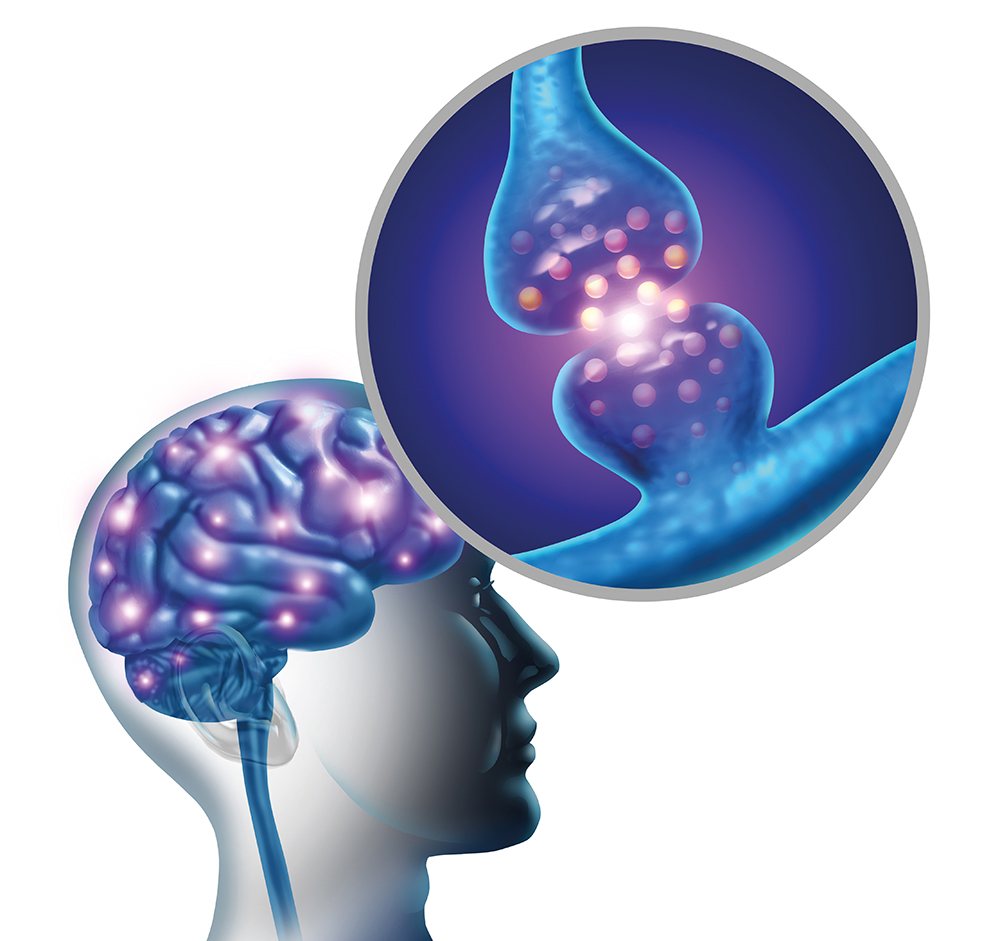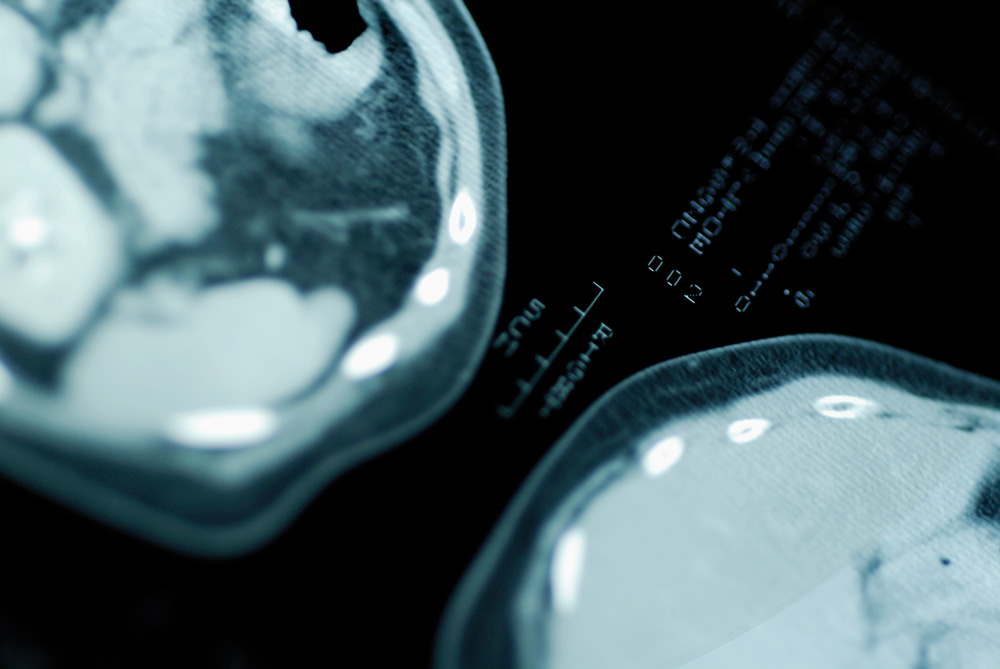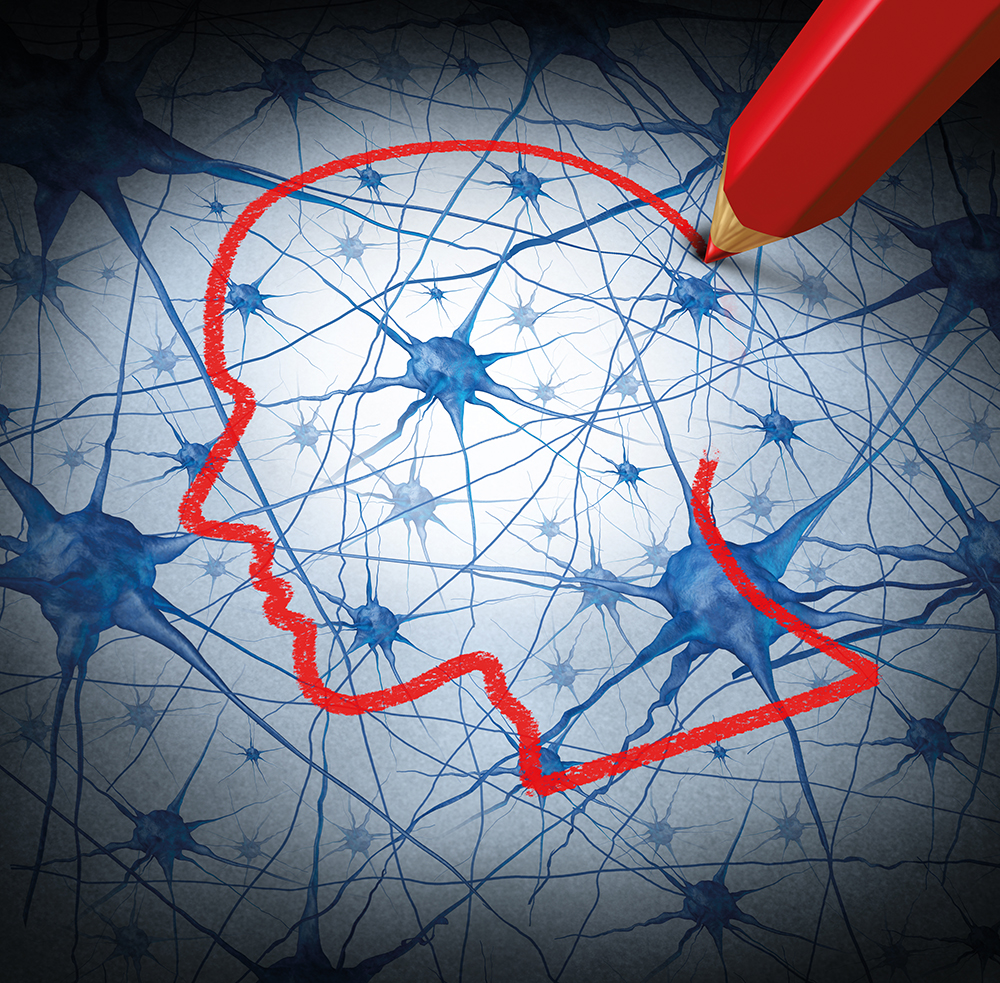Dr Charles Vite – Naturally Occurring Diseases in Dogs and Cats Help to Develop Treatments for Inherited Neurological Disorders
Many inherited neurological diseases are rare but can have severe outcomes, frequently resulting in disability and even death for children. New treatment options are essential to prevent suffering and decrease mortality, but to find such treatments, these diseases need to be more closely studied. Dr Charles Vite and his team at the School of Veterinary Medicine, University of Pennsylvania, are committed to achieving these goals. By utilising animal models and unique markers for inherited neurological disease, they have already delivered promising results supporting the development of new treatment options.
Barriers and Potential for Treating Inherited Neurological Disease
Inherited neurological diseases can present with a wide range of symptoms including hearing loss, incoordination and seizures. Despite the severity and impact of these diseases on affected individuals, effective treatment options remain lacking. This is because significant barriers have prevented the development of therapies and limited the efficacy of the therapies that have been developed.
Novel therapies are hard to come by. Their development requires a good understanding of the disease, and have to be shown to be safe as well as effective. These factors are largely dependent on establishing good models of the disease, which allow characterisation of the disease and experimental treatments. It is also important to be able to effectively evaluate the efficacy of new treatments.
Dr Charles Vite and his team in the School of Veterinary Medicine based at the University of Pennsylvania, have performed groundbreaking research to discover new therapies for inherited neurological diseases. The team uses models of human disease in animals to look for unique markers of disease to test whether new treatments are effective. These novel therapies include gene and cell therapy which involve the addition of normally functioning genes and cells to compensate for ‘faulty’ genes or cells, respectively, as well as pharmaceutical drugs to treat diseases.
So far, Dr Vite’s research has focussed on a class of inherited neurological diseases known as lysosomal storage diseases. Highlights of their research include the development of prospective therapies for Niemann-Pick disease type C and Krabbe disease, both of which can result in death during childhood. This emphasises the importance of their translational research.

Cats and Dogs: Important Models of Neurological Disease
Regrettably, inherited neurological diseases such as Niemann-Pick disease type C and Krabbe disease are still poorly understood and there are few treatments available. A huge barrier to the development of treatments is that the disease must be successfully treated in an animal to show that is safe and effective before it is tested in humans. Yet, for inherited neurological diseases this is difficult because the animal models must be able to develop the disease in a similar way to humans.
In an ideal world, we would most probably use our closest relatives, non-human primates. Common non-primate animal models include sheep and pigs. However, it is difficult to model inherited neurological diseases in these animals because they rarely are affected with the same diseases that affect human patients.
The team directed by Dr Vite at the Referral Center for Animal Models of Human Genetic Disease has highlighted the advantages of using canine and feline models for inherited neurological diseases. This is because diseases including Niemann-Pick disease type C and Krabbe disease naturally occur in cats and dogs. This has revolutionised the characterisation of these diseases and helped researchers on their quest to find potential treatments. It is Dr Vite’s belief that these new therapies will be used to treat both human and veterinary patients.
In a 2017 paper, Dr Vite and colleagues summarised that studying diseases in dogs and cats ‘has allowed for the discovery of disease mechanisms, generation of non-invasive biomarkers for clinical evaluation during therapeutic trials, development of drug delivery and intervention protocols, safety, efficacy, and dosing studies of novel and off-label therapies, and the eventual approval of clinical therapies for many rare and devastating diseases.’

Methods for Evaluating Treatment Outcomes
A key focus for Dr Vite and his colleagues is the identification of biochemical and magnetic resonance markers that can provide information about disease severity. Biochemical markers may include enzymes or other molecules such as lipids. In contrast, magnetic resonance markers are obtained through magnetic resonance imaging (MRI) scans that provide detailed images of the brain. Magnetic resonance markers may include changes to specific structures in the brain that may occur due to the disease.
Both biochemical and magnetic resonance markers are useful for evaluating gene therapy, cell therapy and pharmaceutical drugs as treatment interventions. Dr Vite’s team have used these markers to conduct translational research that improves the outcome for inherited neurological diseases, including Niemann-Pick disease type C and Krabbe disease.
Drug Improves the Outcome of Niemann-Pick Disease Type C
Niemann-Pick disease type C is a rare lysosomal storage disease that primarily affects the liver and brain and is estimated to affect as many as 1 per every 150,000 individuals. It is caused by inheriting a mutation in the NPC1 or NPC2 genes. These genes are responsible for encoding proteins that help to transport lipids, including cholesterol and sphingolipids. Lipids are found in the membranes of every cell in the body. This is the outer layer of the cell that borders the cell, protecting it from the outside environment.
Niemann-Pick disease arises when there is a build-up of these lipids, resulting in cell death. Ultimately, this can lead to organ damage. Niemann-Pick disease type C causes learning disabilities and difficulty with coordination, balance and speech. Symptoms get progressively worse with age and lead to death during adolescence. Unfortunately, there are currently no therapies that are approved by the USA Food and Drug Administration for Niemann-Pick disease type C. Consequently, more research is required to further understand the disease and how to treat it.
In 2015, Dr Vite and colleagues discovered potential treatment options. The team treated cats that share the NPC1 mutation with a drug known as 2-hydroxypropyl-beta-cyclodextrin. They injected the cats either beneath the skin or directly into a specific region of the brain known as the cisterna magna. They showed that injection under the skin could prevent symptoms from developing in the liver. However, high doses of the drugs were required and this led to dangerous side effects within the lungs. In contrast, direct administration of the drug into the brain had promising results.
Furthermore, the researchers investigated biochemical markers of the disease and showed that the concentrations of harmful lipids and the death of specialised nerve cells were reduced. Additionally, the team utilised MRI scanning to show that there was less damage to the brain when cats were treated with the drug. Overall, this led to slower disease progression and prolonged survival time. This has provided hope for new treatment options for Niemann-Pick disease type C.

Gene Therapy: A Potential Treatment for Krabbe Disease
Krabbe disease (globoid cell leukodystrophy) is a lysosomal storage disease that can also result in neurological defects. This disease is caused by inheriting a mutation in the GALC gene which encodes a specific enzyme, a type of protein that is responsible for breaking down lipids.
In nerve cells, lipids are important components of the myelin sheath. This is a protective layer that surrounds the axons of the nerve cells that help to conduct signals in the nerves. When lipids build up, the myelin sheath has defected growth and it becomes damaged. This impairs the ability of nerve cells to conduct signals that control motor skills. When this occurs in developing infants, it can cause blindness, deafness and paralysis, culminating in death often by the age of two. This is known as infantile Krabbe disease.
The only treatment for infantile Krabbe disease is to transplant stem cells from a healthy donor into the patient. Stem cells are cells that can transform into other cells and can produce the missing enzyme. Therefore, the stem cells prevent the onset of disease. However, stem cell transplants carry a large amount of risk and the treatment is often not effective in the long-term.
More recently, Dr Vite and his team have shown that Krabbe disease that naturally occurs in dogs can be treated using gene therapy. A ‘healthy’ GALC gene can be delivered by a virus that can directly infect the cisterna magna in the brain. The idea behind this is that the gene will be delivered by the virus and will encode the ‘missing’ enzyme. The team looked for biochemical markers such as enzyme activity and the concentration of lipids to show that the therapy had worked. Additionally, they used an MRI scan to show that loss of myelin of the nervous system had reduced. Importantly, the therapy prevented neurological defects in dogs and allowed them to live 7 times longer than dogs that had not received the therapy. This is an especially promising treatment as hopefully, it will provide a suitable treatment option for those who cannot have stem cell transplants.

Future Prospects and Research
Dr Vite and his colleagues have helped to characterise inherited neurological diseases and have presented new therapeutic options. They will continue their important work to improve our understanding of the detrimental diseases and provide new methods to evaluate new treatments and their outcomes.
Reference
https://doi.org/10.33548/SCIENTIA614
Meet the researcher

Dr Charles H. Vite
School of Veterinary Medicine
University of Pennsylvania
Philadelphia, PA
USA
Dr Charles Vite is a veterinary neurologist. For his PhD at the University of Pennsylvania, Dr Vite used gene therapy of the central nervous system to treat alpha-mannosidosis in a feline model. After completing his PhD in 2003, Dr Vite remained at the University of Pennsylvania and has served as a Professor of Neurology and Neurosurgery at the School of Veterinary Medicine since 2018. At present, Dr Vite also serves as Director of the National Referral Center for Animal Models of Human Genetic Disease (RCAM), a Center funded by the Office of the Director of the National Institutes of Health. The RCAM houses breeding colonies for over 40 canine and feline models of human genetic diseases. Ultimately, the goal of his laboratory is to improve the understanding and treatment of neurodegenerative diseases by studying naturally occurring animal models of human diseases. Dr Vite participates in multiple societies and serves as member and chair for multiple national committees. Additionally, he is an editor and member of editorial review boards for multiple journals.
CONTACT
W: https://www.vet.upenn.edu/people/faculty-clinician-search/CHARLESVITE
W: https://www.vet.upenn.edu/research/core-resources-facilities/referral-center-for-animal-models
KEY COLLABORATORS
John H. Wolfe, School of Veterinary Medicine, University of Pennsylvania
Steven J. Gray, University of Texas Southwestern Medical Center
Allison M. Bradbury, Abigail Wexner Research Institute Nationwide Children’s Hospital
FUNDING
National Institutes of Health (NIH)
Ara Parseghian Medical Research Foundation (APMRF)
Support for Accelerated Research NPC (SOAR)
Galyatech
FURTHER READING
Bradbury AM, Bagel JH, Nguyen D, et al, Krabbe disease successfully treated via monotherapy of intrathecal gene therapy, The Journal of Clinical Investigation, 2020, 130(9), 4906–4920.
BL Gurda, AM Bradbury, CH Vite, Canine and Feline Models of Human Genetic Diseases and Their Contributions to Advancing Clinical Therapies, Yale Journal of Biology and Medicine, 2017, 90(3), 417–431.
CH Vite, JH Bagel, GP Swain, et al, Intracisternal cyclodextrin prevents cerebellar dysfunction and Purkinje cell death in feline Niemann-Pick type C1 disease, Science Translational Medicine, 2015, 7(276), 276ra26.

Want to republish our articles?
We encourage all formats of sharing and republishing of our articles. Whether you want to host on your website, publication or blog, we welcome this. Find out more
Creative Commons Licence
(CC BY 4.0)
This work is licensed under a Creative Commons Attribution 4.0 International License. 
What does this mean?
Share: You can copy and redistribute the material in any medium or format
Adapt: You can change, and build upon the material for any purpose, even commercially.
Credit: You must give appropriate credit, provide a link to the license, and indicate if changes were made.
More articles you may like
Dr Ralf Adam | New Technologies Shaping the Future of Oral Hygiene
Understanding the efficiency of various toothbrush technologies is essential for achieving optimal oral health. Dr Ralf Adam, who leads a dedicated team at Procter & Gamble in Germany, is keen to investigate the complexities of these technologies. His team have provided new insights into the best toothbrush types for plaque removal and the maintenance of gum health. By highlighting the importance of informed oral care decisions and ongoing investigations, this vital research works towards ensuring everyone can achieve a brighter, healthier smile.
WVU ADVANCE Center | West Virginia University Team Fosters Group-Level Equity and Inclusivity at Higher Education Institutions
Despite ongoing efforts to broaden participation in the academy, many groups remain underrepresented. More needs to be done to ensure that all faculty and students succeed in institutions of higher education. The WVU ADVANCE Center is an academic hub at West Virginia University, which provides services, events, mentorship opportunities, and other initiatives that promote the sense of belonging that leads to thriving faculty and students.
Dr Olalla Castro-Alvaredo | Measuring Entanglement: Symmetry-Resolved Entropy
Dr Olalla Castro-Alvaredo of the City University of London (UK) and her collaborators are advancing our understanding of an important phenomenon of quantum mechanical systems known as entanglement and, especially, its mathematical measures. Symmetry-resolved entanglement entropy is one such measure. Their study focuses on special quantum states which are excited with respect to a ground state. The research shows how the entanglement amongst quantum particles can be measured and assesses the contribution to the entanglement of quasiparticle excitations, particularly in the presence of additional symmetries.
Allison Balabuch – Professor Ann Brower Stahl | Bringing Archaeology to the Classroom and Beyond: The African Archaeology Review
The African Archaeology Review (AAR) journal recently celebrated its 40th anniversary. To mark this occasion, a special issue was compiled with an innovative theme: Archaeology for Education. To achieve this, the AAR editorial team assembled a group of academic researchers in archaeology with the proposition of writing articles collaboratively with educators that would make their research centred on Africa’s rich pasts accessible for use in school learning. The goal is to change the stories we tell about Africa both within and outside the continent.




